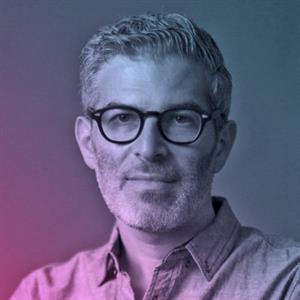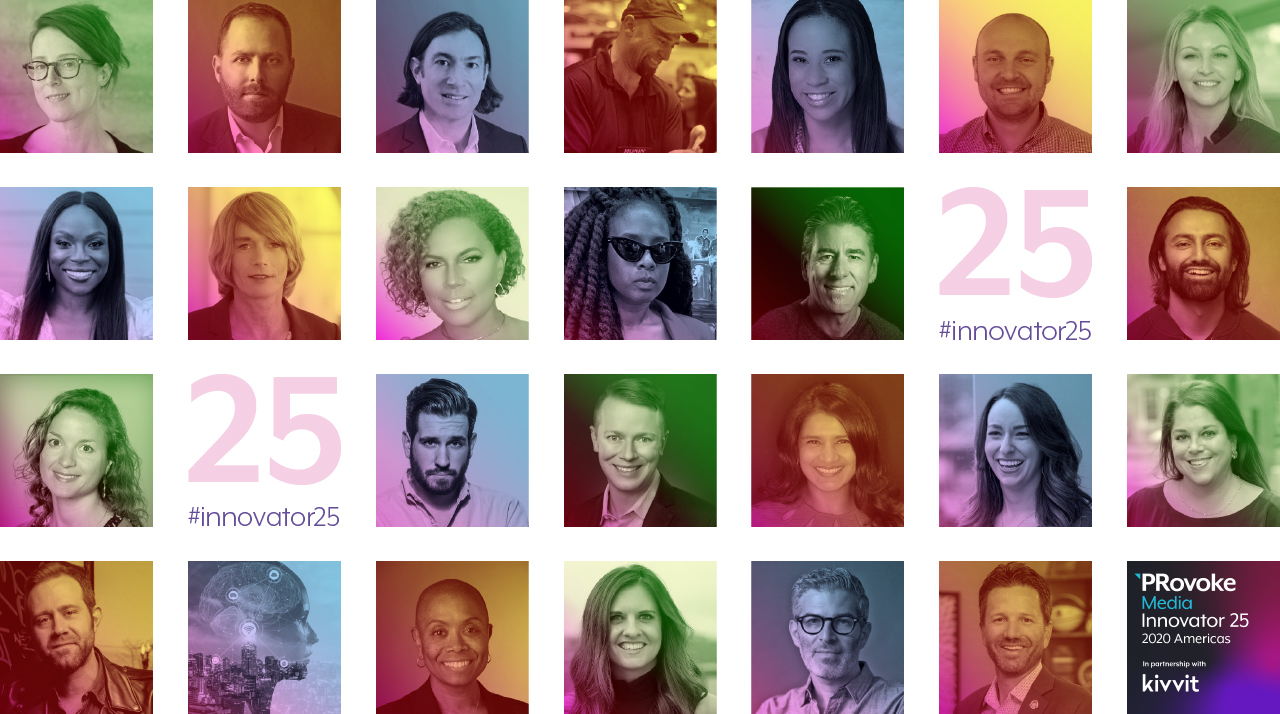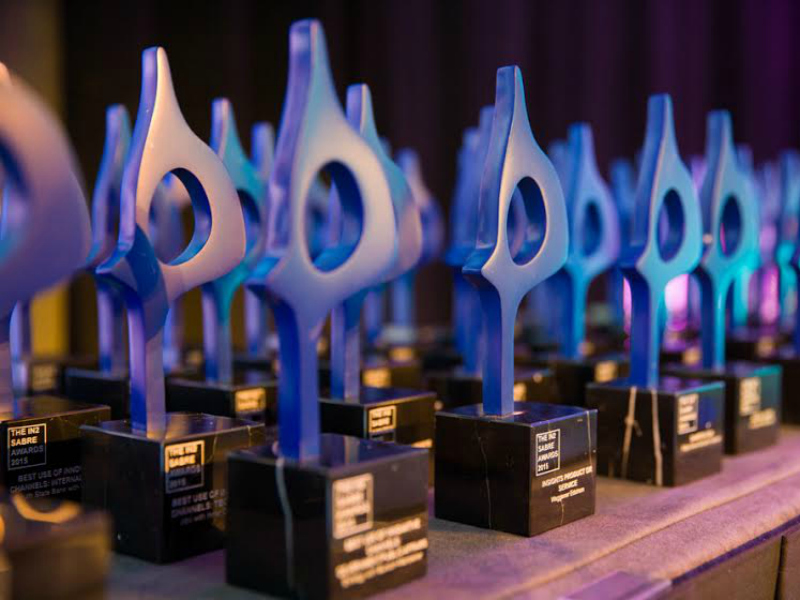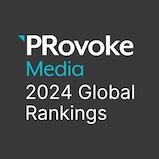
Jason Schlossberg
Managing Director, Strategic Communications
Huge
New York
“We must ensure that the underrepresented are meaningfully involved and authentically represented both in the creation of our work and in the benefits that can be derived from it. This means rethinking every element of our business through this necessary lens."
Jason Schlossberg was part of the team that revived life back into the Pantone Color of the Year campaign. Its pick for 2020, in hindsight was poignantly prescient: classic blue. The color instills "calm, confidence, and connection, this enduring blue hue highlights our desire for a dependable and stable foundation on which to build as we cross the threshold into a new era." This year, marked Pantone’s first multi-sensory Color of the Year. By expanding the 2020 color beyond the visual, Schlossberg inspired people to think differently about color, and helped Pantone reach a greater diversity of people.
Where is the most urgent need for innovation within the PR/communications industry?
Talent and recruiting. We need to make it much easier for people with nontraditional skill sets and backgrounds to feel welcome, valued, and able to do their best work.
How would you describe the communications/PR industry's level of innovation compared to other marketing disciplines? About the same as other marketing disciplines
How have the events of 2020 impacted the the industry's innovation? Please elaborate on your response. I think it is still too early to tell, but creativity and innovation thrive under constraints so I am cautiously optimistic that in early 2021 and beyond we are going to be witness to a lot of innovative thinking coming out of the PR industry.
Where is the PR industry's greatest opportunity for taking the lead on innovation? Business/management practices
What is the ideal working scenario for innovation?
There is no question that the ideal working scenario for innovation is collaborative in whatever form it can safely take. Agencies and teams that are made up of individuals from diverse backgrounds with different skill sets are smarter and more innovative. It’s also important that team members feel safe, respected, and are allowed to fail. Before Huge transitioned to WFH, the physical environment made it easy to be inspired, challenged, and influenced on a daily basis. All you had to do was take a walk around the office, join a crit or workshare, or simply overhear an impromptu meeting at the next row of workstations.
Now that we are remote, it’s been more difficult to achieve the true serendipity that physical proximity affords, but it hasn’t been impossible. It just now takes a more concerted effort to stay engaged with individuals and teams that you don’t work with on a day-to-day basis to make the connections necessary for innovation. At the same time, being remote has also allowed us to broaden our horizons in ways that weren’t possible previously - or at least not previously efficient. No longer being bound to a physical office has unexpectedly fostered more interoffice and global collaboration than ever before. Every team and project that I am currently engaged in right now includes members from across the country and in many cases the world.
Has 2020 changed the way you define/approach innovation? How?
Embracing true innovation is difficult even in the best of times because we all have a bias against creative ideas. Humans on the whole are risk-averse, fear change, and do whatever they can to reduce uncertainty, all of which are innovation killing traits. As a result, it’s hard for most of us to simultaneously recognize ideas as both new and useful, which is the very definition of innovation.
Now add the extreme levels of anxiety that we are all feeling right now. Research has shown that individuals have an even harder time thinking creatively under stress because it causes us to retreat to old habits. So while my overall approach to innovation has not changed in 2020, how I go about articulating it - especially to clients - has. The pandemic has shown us how fragile our systems really are. The problems that face us today have many causes and even more effects, rendering traditional solutions insufficient. Organizations that prioritize agility, adaptability, and resiliency - i.e., innovation - will be the most successful today and in the future.
What is the most innovative comms/marketing initiative you've seen this year?
What we launched it in October!
What is the most important lesson you've learned this year?
I hear too many organizations lament that in the current environment, it’s impossible to “win.” I’m not sure exactly what that means other than as a euphemism for “unanimous and unequivocal public support for our actions.” But if your goal is to do what’s right for people and for society then it’s okay not to win because it’s not about you. In fact, you are probably going to “lose” sometimes because doing good and doing what’s right is difficult. If it was so easy, the world would be a much better place. So the most important lesson that I’ve learned this year is that it's more important to take action to do good than it is to win.
Describe a moment in your career that you would consider innovative.
Joining Huge in 2017 was without a doubt an innovative moment for me. Up until then, I had a wonderful and rewarding career, albeit in a more traditional PR/communications environment. To leave a comfortable place where I was a co-founder/co-owner to build an entirely new practice at one of the foremost global design and innovation agencies was both risky and intimidating. But that’s what innovation is all about: taking risks to build something better. Fast forward to 3+ years later and I can tell you that it was a worthwhile risk. Over that period of time, our team has architected some of Huge’s most high-profile and creative engagements.
Any habit/activity that you have added to your life during Covid-19 that you hope to carry with you when the pandemic subsides? Connecting with people outside of my immediate family just to check-in. Prior to the pandemic, I was far from anti-social, but I primarily reached out to friends, colleagues, and extended family when I had something specific to discuss or ask. But staying connected for the sake of it, checking-in, and looking out for the mental health of the people you care about is, in and of itself, a worthwhile and necessary endeavor. I don’t think I am alone. I recall reading back in April that the daily call volume handled by Verizon was more than 2x the number of calls made on Mother’s Day the previous year.
How can the PR industry make real progress in diversity, inclusion and equity? What is the biggest roadblock standing in the way? I think what's true for the PR industry is true for most industries: to make real progress in diversity, inclusion, and equity the locus of responsibility has to shift solely from HR and talent management to include every part of the organization. While it's extremely important to focus on "righting the ratio" and ensuring equitable representation across race, gender, and sexual orientation that's just the first step. Our work is strengthened by diversity of thought, background, and perspective.
This is not an opinion, this is a fact. Diverse and equitable organizations and teams are smarter and more innovative. This extends to our external partnerships, our vendor relationships, and how we develop products and campaigns. We must ensure that the underrepresented are meaningfully involved and authentically represented both in the creation of our work and in the benefits that can be derived from it. This means rethinking every element of our business through this necessary lens.
At least from the agency perspective, the biggest roadblock is that our work is often in the service of our clients’ vision and aspirations, which may not always be aligned with our own, especially in regards to diversity, inclusion, and equity. It is our moral imperative to help eradicate the racism that is embedded in our systems. Regardless of who they are for, we must not build or support programs, products, and services that are biased against, disenfranchise, ignore, or harm communities of color and those who are oppressed. And if we discover that our work negatively impacts or has unintended consequences on these audiences, we must own it, address it, and fix it immediately.
What are you thinking about most these days?
I’m thinking about a lot of things these days, but these two thoughts are currently the most top of mind right now: 1. The power of PR and communications to manifest the future. For those who are not communications professionals, there is a general assumption that PR broadly serves one or two purposes: either amplifying the positive things that an organization does; or minimizing/deflecting the fall out from the negative things an organization does.
But those of us who are professional communicators know that there is a third, less common purpose: to serve as a north star or map for the future direction of a company. Determining the story you want to be told about your organization can and should be the very first step towards turning that story into reality. When thought of this way, communications becomes an essential business strategy and innovation tool, a force for transformation. 2. Local consumption is a necessary form of public philanthropy. It’s vitally important - I dare say it’s our responsibility - to spend money with our local businesses right now. It may seem counterintuitive because in times of uncertainty we naturally prioritize saving and reducing our expenditures, but if we all do that, many of our neighbors will suffer.
Bold prediction for 2021
We’re going to all stop making bold predictions! Predictions are essentially our attempts to instill confidence and to create efficiencies so that we will know where to deploy our limited resources. The better we can get at predicting the future, the more efficient we can become. For thousands of years very little changed. It was therefore easy to predict the future - it was essentially the same as our past and present. Over the last few decades, the pace of change increased dramatically but still followed logical trajectories.
But now our future has never been so opaque and the desire to try and predict what will happen will only do us a disservice. Our relentless focus on the power of prediction and the cult of efficiency in all of its forms has created an extremely fragile system that can easily fall apart in times of great stress - like now. We’ve seen that it only takes a small divergence from our predictions to destroy the very systems that we built based on them. This is why six months into a pandemic we still can’t easily find disinfectant wipes, and more dramatically, why the future of our democracy will be determined by a handful of people in about 10 states. Organizations that set up systems to address multiple contingencies, that prioritize agility, adaptability, and resiliency over predictions and efficiency will be the only ones left in the future. That’s my prediction!



 Podcasts
Podcasts Videos
Videos Profiles & Interviews
Profiles & Interviews Crisis Review
Crisis Review Coronavirus
Coronavirus Trend Forecasts
Trend Forecasts Social & Digital
Social & Digital Technology
Technology Consumer
Consumer Employee Engagement
Employee Engagement Sports Marketing
Sports Marketing  Global PR Agency Rankings
Global PR Agency Rankings Agencies of the Year
Agencies of the Year Innovator 25
Innovator 25 Creativity in PR
Creativity in PR Asia-Pacific Communication Index
Asia-Pacific Communication Index SABRE Awards
SABRE Awards PRovokeSummit Global
PRovokeSummit Global PRovoke Media Regional Series
PRovoke Media Regional Series Agencies of the Year
Agencies of the Year Roundtables
Roundtables Agency Playbook
Agency Playbook.jpg) All Jobs
All Jobs






